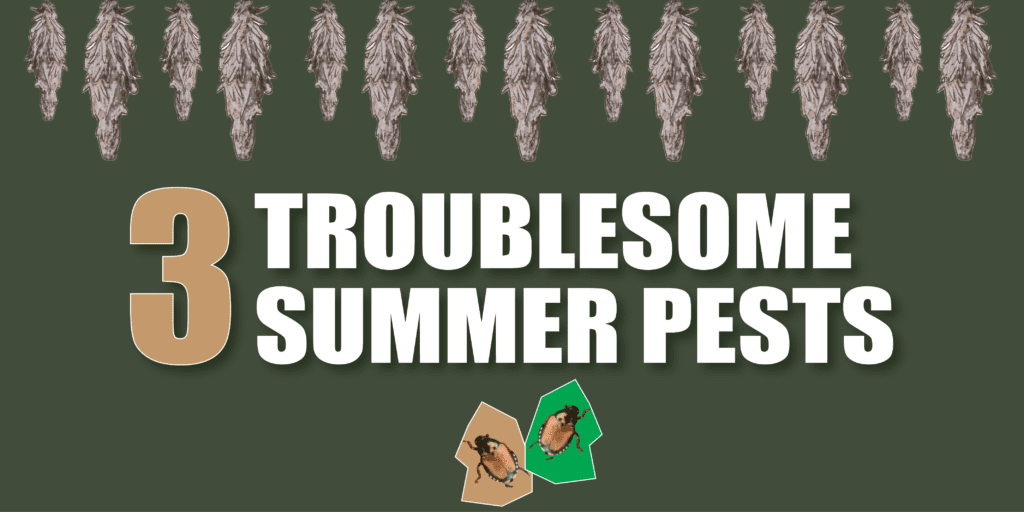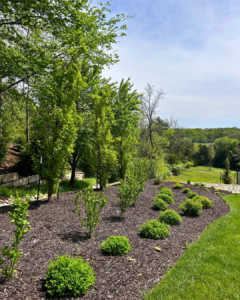Although summer means pool days, grilling in the backyard with friends and family, and fireworks, it’s also time for summer pests to thrive. To stop pests before they become an infestation, you’ll have to be vigilant.
At Lawrence Landscape, we see and prevent pests all summer long. Here is a list of the three most common summer pests that everyone should keep an eye out for!
What are Bagworms?
Bagworms appear during early summer and can stick around until fall. They’re particularly troublesome pests, because they attack and devour trees and shrubs, especially those of the evergreen variety. The problem is that they move quickly and can eat and destroy trees and shrubs in just a few days.
Signs of bagworms include feeding damage, browning foliage, or something that looks like a cone on a tree that isn’t a pine. Bagworms are also masters of blending in, because their bags are made of partially consumed foliage. By the end of the season, the bags can be up to 1.5” inches long, making them easier to spot.
The best way to stop them is during June, when the bagworms are actively feeding. A chemical treatment will do the trick to stop them before they cause too much damage. If you wait too long, removing them by hand is the only way to prevent further damage.
What are Japanese Beetles?
Japanese Beetles are small but can cause big problems. Although they prefer to feed on roses, they’ll devour any plant that they can reach. They are easily identifiable by the “skeletonized” or lace-like damage they cause on foliage, from feeding and leaving only the leaf veins behind. The distinct metallic blue-green head and copper back of the adult beetle also makes them easy to spot.
During their grub stage, they feed on the roots of grass and garden plants. When they emerge from the soil in June, the adult beetles are one of the most destructive summer pests. They usually attack plants in groups, causing severe damage.
One of the ways to stop Japanese Beetles in their tracks is to apply an insecticide. Another, more time-consuming, tactic is to hand-pick the adult beetles and place them in a solution of soapy water.
What are Spider Mites?
Spider mites are the smallest and least destructive of these summer pests. Due to their tiny size, they’re only visible when a large infestation occurs and causes considerable damage to plant leaves.
The spider mites feed by sucking cell material from leaves, causing discolored spots and stippling on the plants. A large number of spider mites can cause more severe damage, resulting in leaf yellowing and eventual leaf drop. Yet, the damage is mostly aesthetic when it comes to ornamental plants. Lasting damage usually only occurs when the population is extremely high.
Chemical treatments and insecticides are an effective way to control spider mite infestations but are only necessary when there’s a large number feeding on plants. Pruning infested parts of plants, proper watering, and minimizing the stress that your plants undergo will help prevent future infestations.
See any of these pests in your yard?
If you’ve seen evidence of any of these pests, contact us today! Our team of experts can help set up an individualized treatment plan that will put a stop to the pests plaguing your yard.




